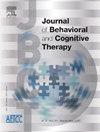Morphological changes and body representation: A study of the link between weight cycling and body schema disturbances
IF 1.6
Q3 PSYCHIATRY
引用次数: 0
Abstract
A drastic change in one body part can result in body misestimations and consequences for motor behaviors. One hypothesis for this occurrence is a lack of body schema updating due to the rapid morphological change. However, in anorexia nervosa, a condition with weight loss and a global body change, the oversized body schema can instead be explained by the individual’s negative attitudes toward the body (body image). The objective of this study was to determine the impact of global body changes on the body schema due to weight variations outside the context of anorexia nervosa. To this end, we compared the body schema performances of 37 participants with frequent weight variations over the past 5 years (weight cycling) with those of 37 participants with stable weight over the same period (control) on a task specifically design to precisely assess the tactile dimension of the body schema (SKIN) and over different body parts. We found that people with weight cycling had more body schema distortions, with a mean oversized body surface on all body parts tested, compared with those of the control group. The body schema was affected for the body parts that were more sensitive to dissatisfaction (lower back [love handles], hip, thigh, belly), but there was no impact of pathological eating behaviors or actual weight. These results illustrate for the first time the direct negative impact of global body changes on the body schema due to weight variations. This study suggests that vigilance is needed in treating patients who have undergone significant morphological modifications, such as occurs in eating disorders, the postpartum period, and after bariatric or any reconstructive surgery.
形态变化与身体表征:体重循环与身体图式紊乱之间的联系研究
身体某一部位的急剧变化会导致对身体的错误估计,并对运动行为产生影响。出现这种情况的一种假设是,由于形态的快速变化,身体图式缺乏更新。然而,对于神经性厌食症这种体重减轻且身体发生全面变化的病症,身体图式过大反而可以用个体对身体(身体形象)的负面态度来解释。本研究的目的是确定在神经性厌食症的背景下,体重变化引起的整体身体变化对身体图式的影响。为此,我们比较了 37 名在过去 5 年中体重经常变化的参与者(体重周期性变化)和 37 名在同一时期体重稳定的参与者(对照组)在一项专门用于精确评估身体图式触觉维度的任务(SKIN)上对不同身体部位的身体图式表现。我们发现,与对照组相比,体重周期性变化者的身体图式扭曲程度更高,在所有测试的身体部位上,身体表面的平均尺寸都过大。身体图式受到影响的是对不满意更敏感的身体部位(下背部[爱手]、臀部、大腿、腹部),但病态饮食行为或实际体重没有影响。这些结果首次说明了体重变化导致的身体整体变化对身体图式的直接负面影响。这项研究表明,在治疗形态发生重大改变的患者时需要保持警惕,如饮食失调、产后、减肥或任何整形手术后的患者。
本文章由计算机程序翻译,如有差异,请以英文原文为准。
求助全文
约1分钟内获得全文
求助全文
来源期刊

Journal of Behavioral and Cognitive Therapy
Psychology-Clinical Psychology
CiteScore
3.30
自引率
0.00%
发文量
38
审稿时长
60 days
 求助内容:
求助内容: 应助结果提醒方式:
应助结果提醒方式:


